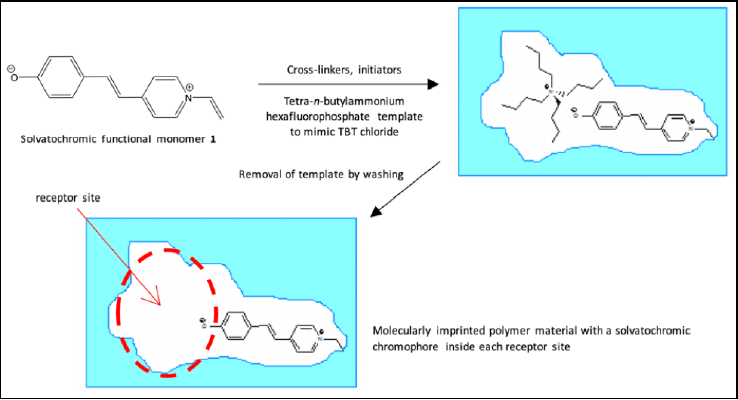Involved Member: Prof. Michael Hon Wah LAM
Our research group at the State Key Laboratory of Marine Pollution focuses on the development of chemosensing materials via molecular imprinting (MIP) and has already acquired a lot of experiences in the fabrication of MIPs and other related materials. To tackle the challenge of the chemosensing of non-polar, hydrophobic organic contaminants that do not generally interact with commonly used signal transducers, we developed a novel molecular imprinting technology that makes use of solvatochromic molecular reporters to sense the minute changes in the polarity of the micro-environment within the molecularly imprinted receptor sites upon the molecular recognition and binding of such organic contaminants. To demonstrate the unique capability of our chemosensing technology, a special molecularly imprinted polymer material that can produce colorimetric and fluorometric responses upon the binding of tributyltin chloride is fabricated. This is the first time that tributyltin species can be detected by a chemosensor.
We will continue our work to develop more intrigue molecular sensing strategies that do not require specific molecular interactions with non-polar and hydrophobic analytes for molecularly imprinted chemosensing materials. These new chemosensing mechanisms as well as the chemosensing materials developed will be very useful for the rapid, in-situ screening of selected environmental contaminants that are currently unable to be conveniently detected in complex sample matrices without the use of sophisticated analytical instrument after tedious ex-situ separation, pre-concentration and clean-up procedures.

